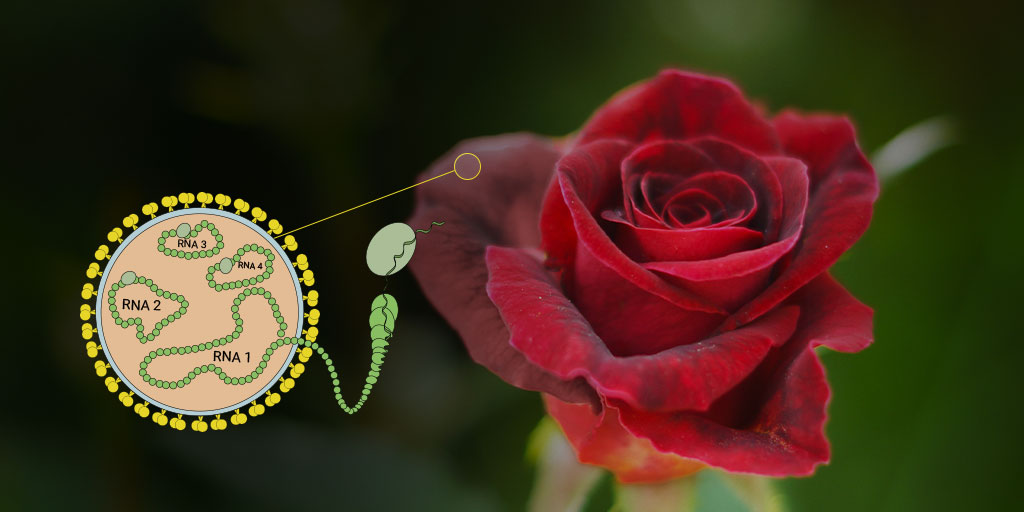
Roses, the universal symbol of love and affection, are one of the most popular ornamental flowering shrubs used by landscapers and home gardeners and account for almost half of the billion-dollar ornamental plant market. The growing prevalence of rose rosette disease poses a significant threat to these industries. This lethal disease is caused by the Rose rosette emaravirus (RRV) and transmitted by the tiny eriophyid mite, Phyllocoptes fructiphilus. Infection by RRV results in prolific growth of clustered and bunched plant shoots (witches’ broom), malformed flowers and leaves, malformed shoots and enlarged stems and abundant leaf growth and thorniness. This excessive growth depletes the plant’s energy, eventually causing death.
Emerging and Devastating Plant Viruses of the Genus Emaravirus
RRV is a single-stranded, segmented, negative-sense RNA virus belonging to the genus Emaravirus, a relatively new genus that was established in 2012. These emerging viruses can be devastating to trees, herbaceous woody plants and vines. At Texas A&M University, Dr. Jeanmarie Verchot’s lab is working to better characterize and understand these new viruses. In addition to threatening roses, these viruses cause damage to important agriculture crops such as wheat and pigeon peas. They also endanger sensitive ecosystems when they infect plants specialized to a particular habitat, as is the case with Palo verde broom virus infection of palo verde trees of the Sonoran Desert (1).
Continue reading “Growing Our Understanding of Rose Rosette Virus Through Reverse Genetics”